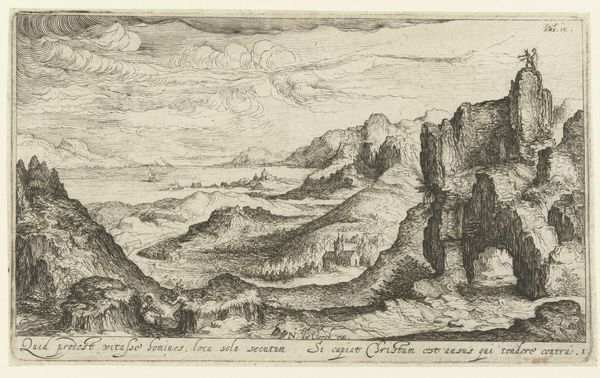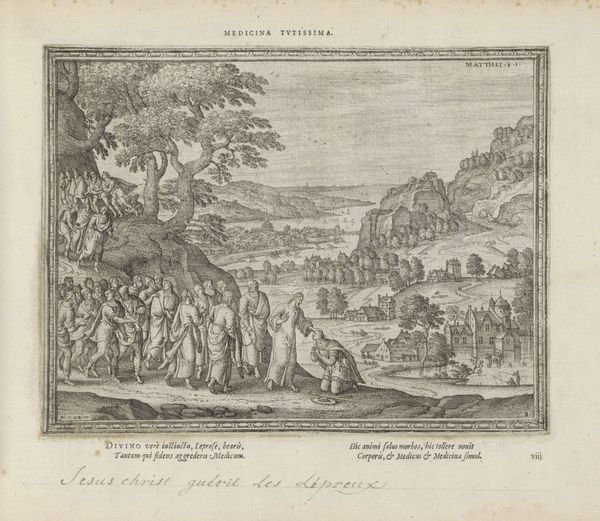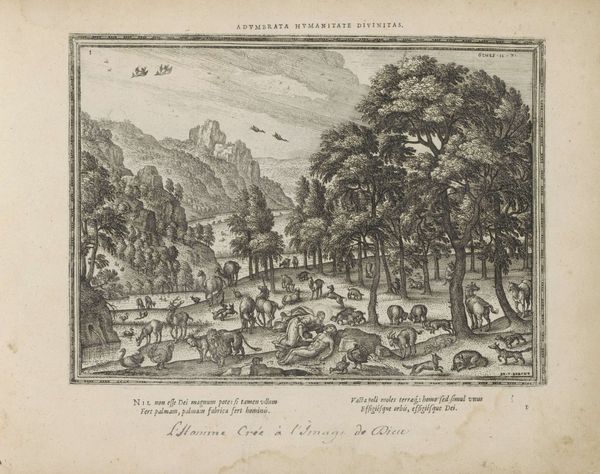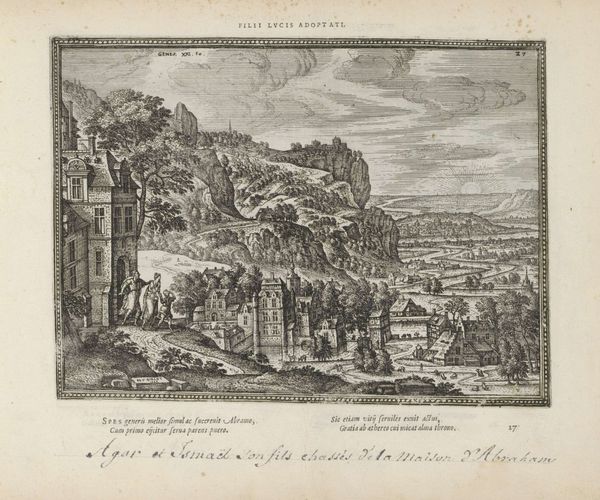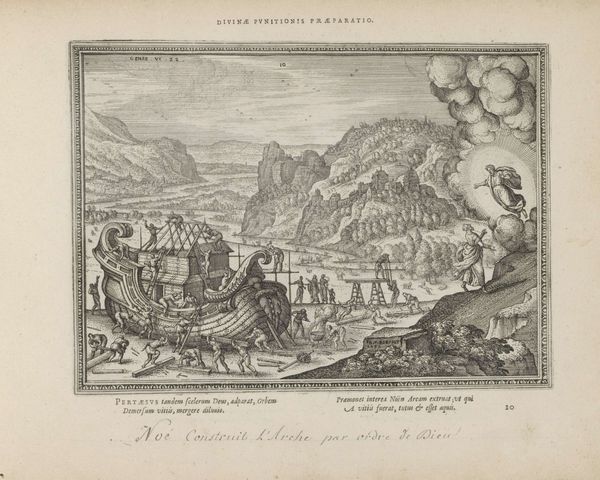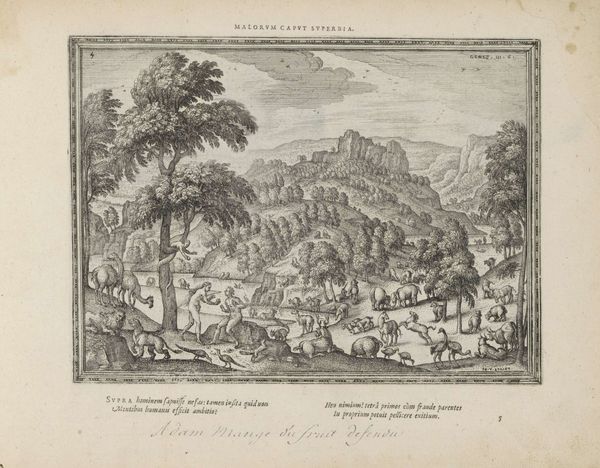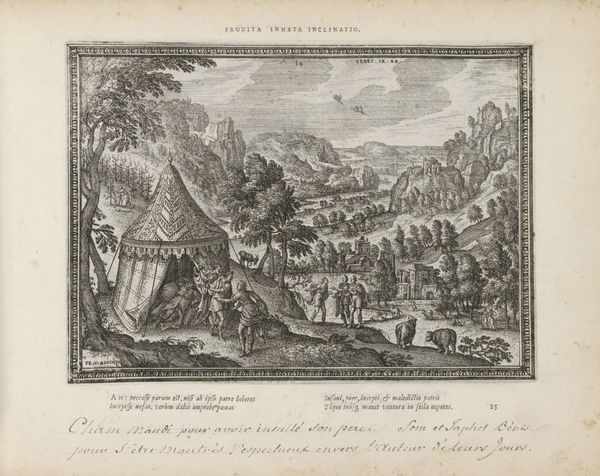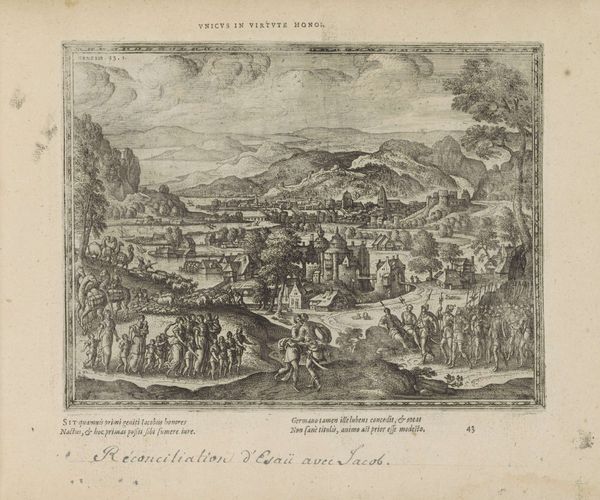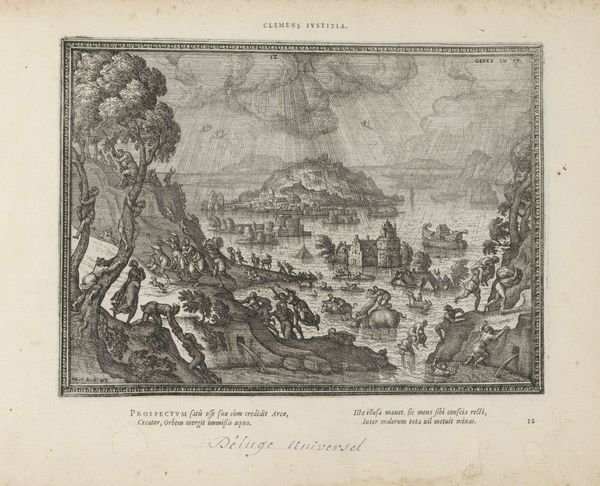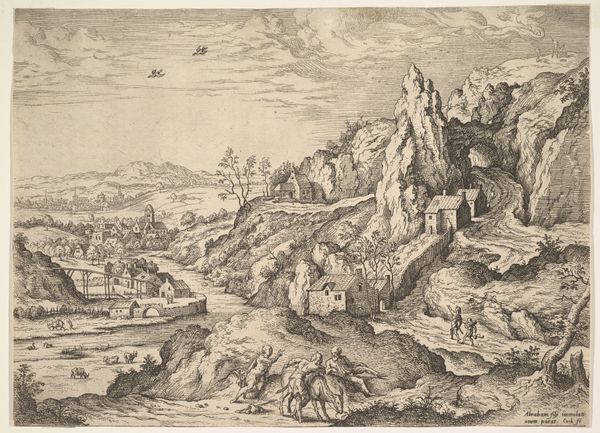
print, engraving
# print
#
old engraving style
#
landscape
#
mannerism
#
engraving
Dimensions: height 182 mm, width 245 mm
Copyright: Rijks Museum: Open Domain
Curator: This is Pieter van der Borcht the Elder's "Landscape with Hagar and the Angel," dating roughly from 1582 to 1613. You can find it here at the Rijksmuseum. Made with engraving, it captures a dramatic moment. Editor: My first impression is one of immense isolation. The figures are dwarfed by the elaborate, almost theatrical landscape. The detail is astounding! It gives the scene a feeling of immense age and perhaps a sort of foreboding. Curator: Absolutely, the scale is important. The Mannerist style emphasizes artifice. It takes place at a crucial juncture in the Old Testament story. Hagar, Abraham's servant, cast out into the wilderness with her son Ishmael, is being consoled by an angel. A narrative laden with issues of race, class, and displacement. Editor: It speaks volumes, doesn't it? The angel appears to offer comfort, yet the broader story is rooted in systemic inequality. Hagar, as a woman and an Egyptian, becomes a pawn in Abraham's lineage. Is the consolation genuine, or merely a band-aid on a deeper wound? Curator: Precisely. The composition also plays a role. The intricate detailing and use of contrasting light and dark—it heightens the emotional drama, creating tension between the earthly suffering of Hagar and the promise of divine intervention. Editor: Look at the way van der Borcht renders the wilderness. It's both beautiful and menacing. The towering rocks, the dense trees...it emphasizes the vulnerability of Hagar and her child in a hostile environment, a potent metaphor for marginalized people abandoned by societal structures. There’s very little empathy extended in such a context. Curator: Exactly, this scene is far from simple solace. It's loaded with complex theological, social, and political implications. A small print, but a giant statement, that forces us to reckon with faith, power, and injustice. Editor: It lingers with you, doesn't it? You walk away pondering these women’s struggles and how history still struggles to extend true refuge, not only promise it. It’s definitely something to be considered while here at the museum.
Comments
No comments
Be the first to comment and join the conversation on the ultimate creative platform.


